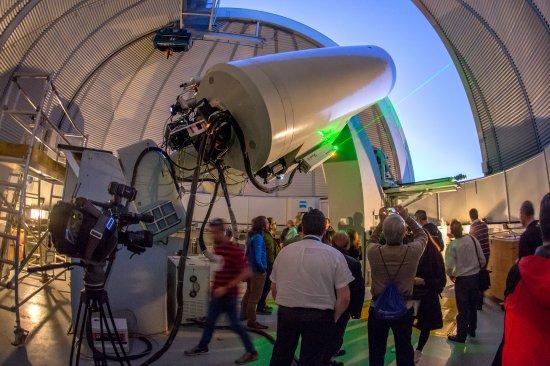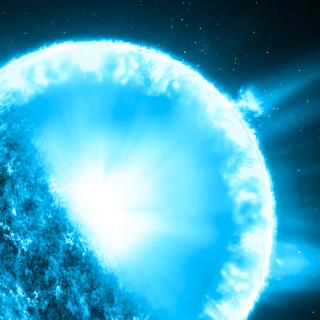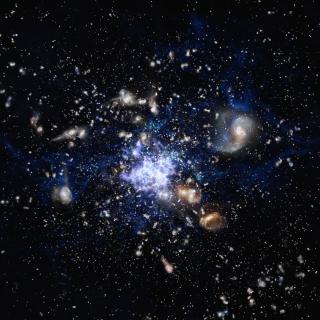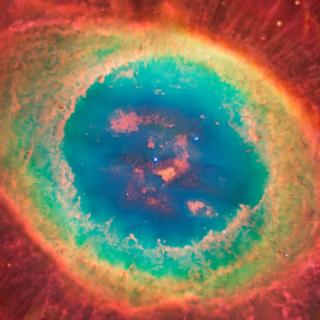Lasers, space debris and the detection of asteroids were the starring themes of a week dedicated to space optics at the Canarian observatories. More than 350 experts and amateurs from all over the world queued up to see the telescopes and learned about the leading technology in the space sector.
The International Conference on Space Optics (ICSO), celebrated for the first time in Tenerife, brought together not only professionals from the European Space Agency (ESA), NASA, and leading companies in the field of optical instrumentation, but also a group of tweeters who had come to join in the first Tweetup organised in Spain. A Tweetup is a meeting in which active users of the social networks meet to share their common interest, going beyond the screens of their computers, tablets, or mobile phones.
The week began with a very special greeting from space on the part of the ESA astronaut Alexander Gerst. The day before making his first spacewalk Alexander tweeted a night-time image of the islands of Tenerife and Grand Canary, taken from the International Space Station.
The 15 tweeters attending Tweetup #SpaceOptics generated more than three thousand tweets, and received 1,8 million hits in the networks during the week. The key activity for them was to be present during laser contact with the Space Station. At nightfall on October 8th the Optical Ground Station (OGS) pointed its laser at the correct spot on its orbit, and followed its trajectory accurately during the four minutes which it took to cross the sky above the Teide Observatory.
The conference finished today with the visit of the experts to the Teide Observatory –about 300 people-, where they will tour the main telescopes, guided by experts from the IAC. Behind them lies a week of intense discussion about measures to eliminate space debris, high velocity communication using lasers, and the development of instruments for future planetary missions.
Links of interest:
- RTVC Report “Tenerife contacta mediante luz láser con la Estación Espacial Internacional”
- Tribo TV: Tuiteros Teide
- Observation of the International Space Station (ISS) from the OGS of the Teide Observatory during Tweetup #SpaceOptics, organized by ESA and the IACV - Video: Daniel López/IAC and ESA - Vídeo (MP4)
- ESA
E-mail: contactsocialspace [at] gmail.com (contactsocialspace[at]gmail[dot]com)
Twitter: @Social4Space
Blog: http://blogs.esa.int/socialspace/



